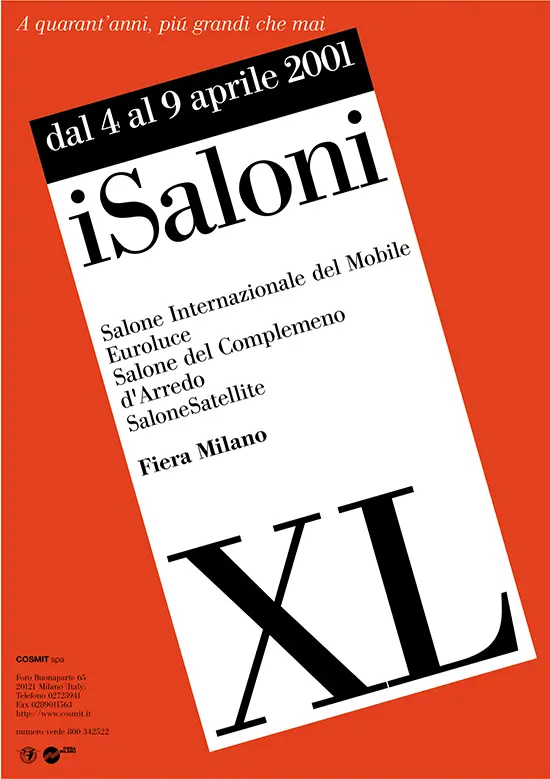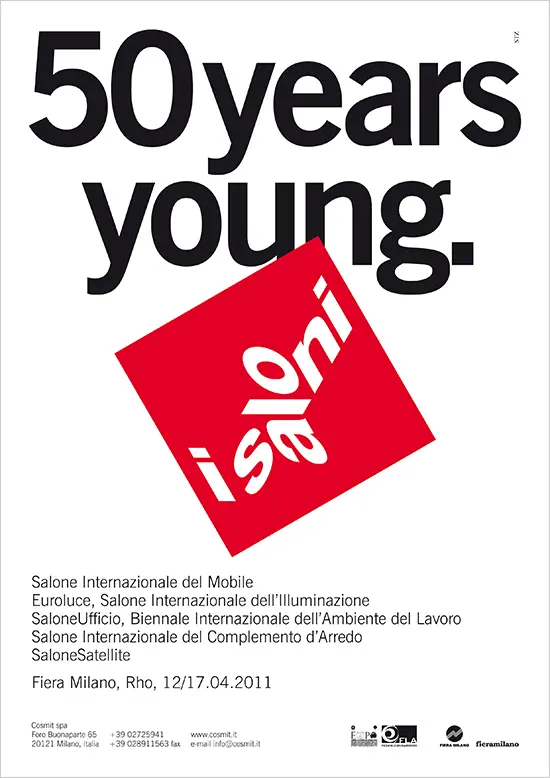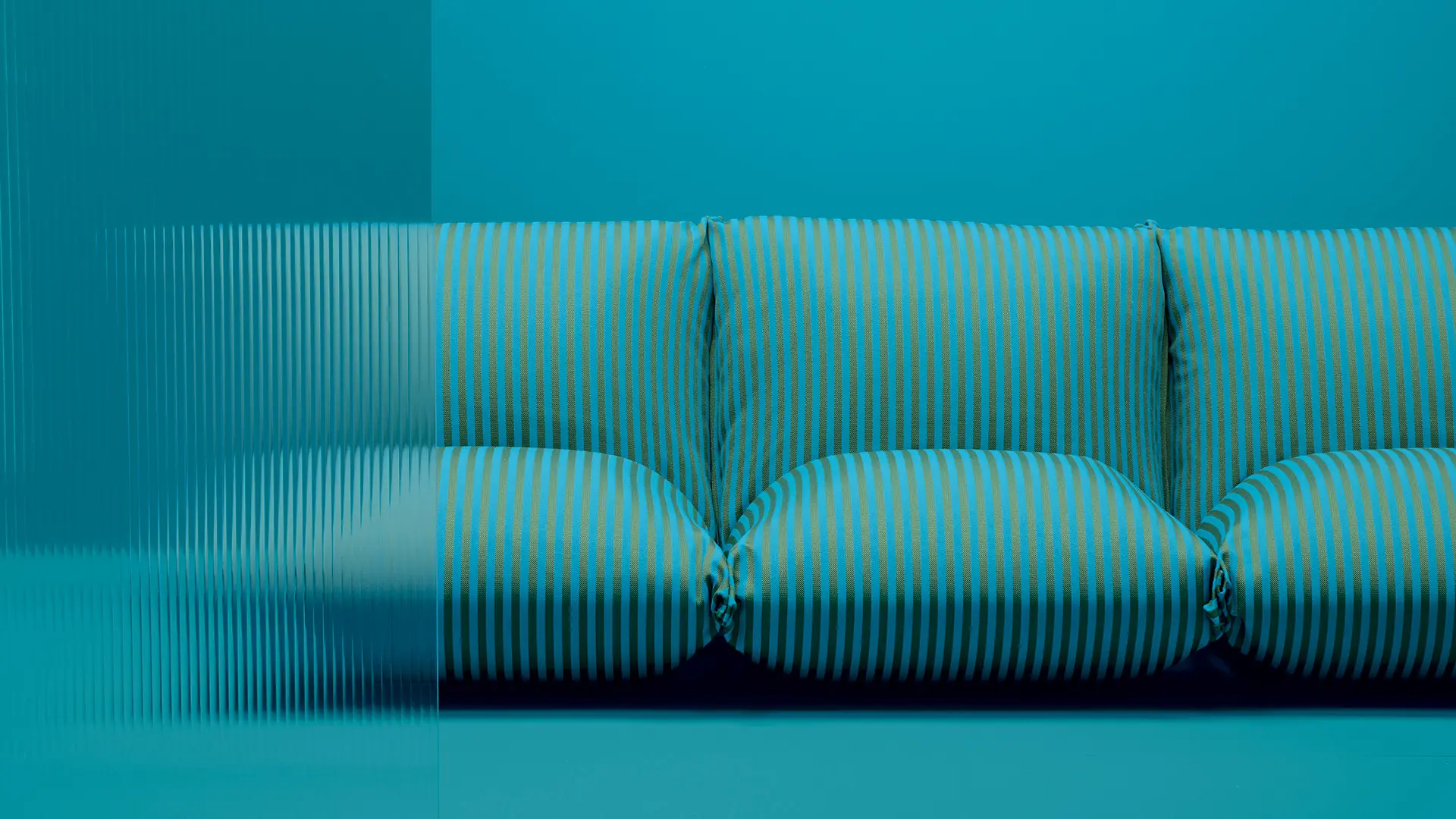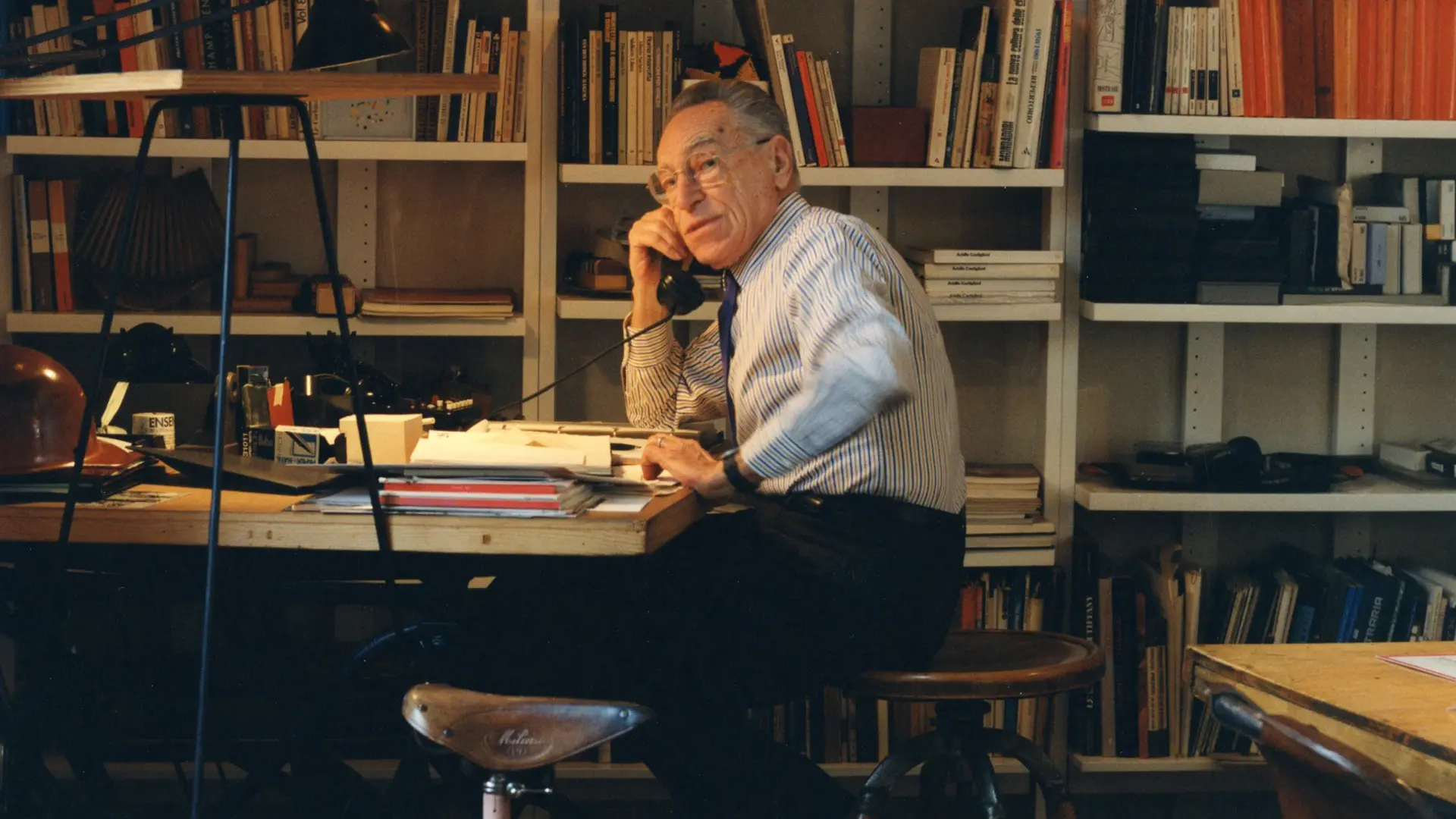Graphics, sequences, and textures that define a new design grammar: the new solutions of striped design presented at Salone 2025
60 years of the Salone del Mobile.Milano for those who were not there
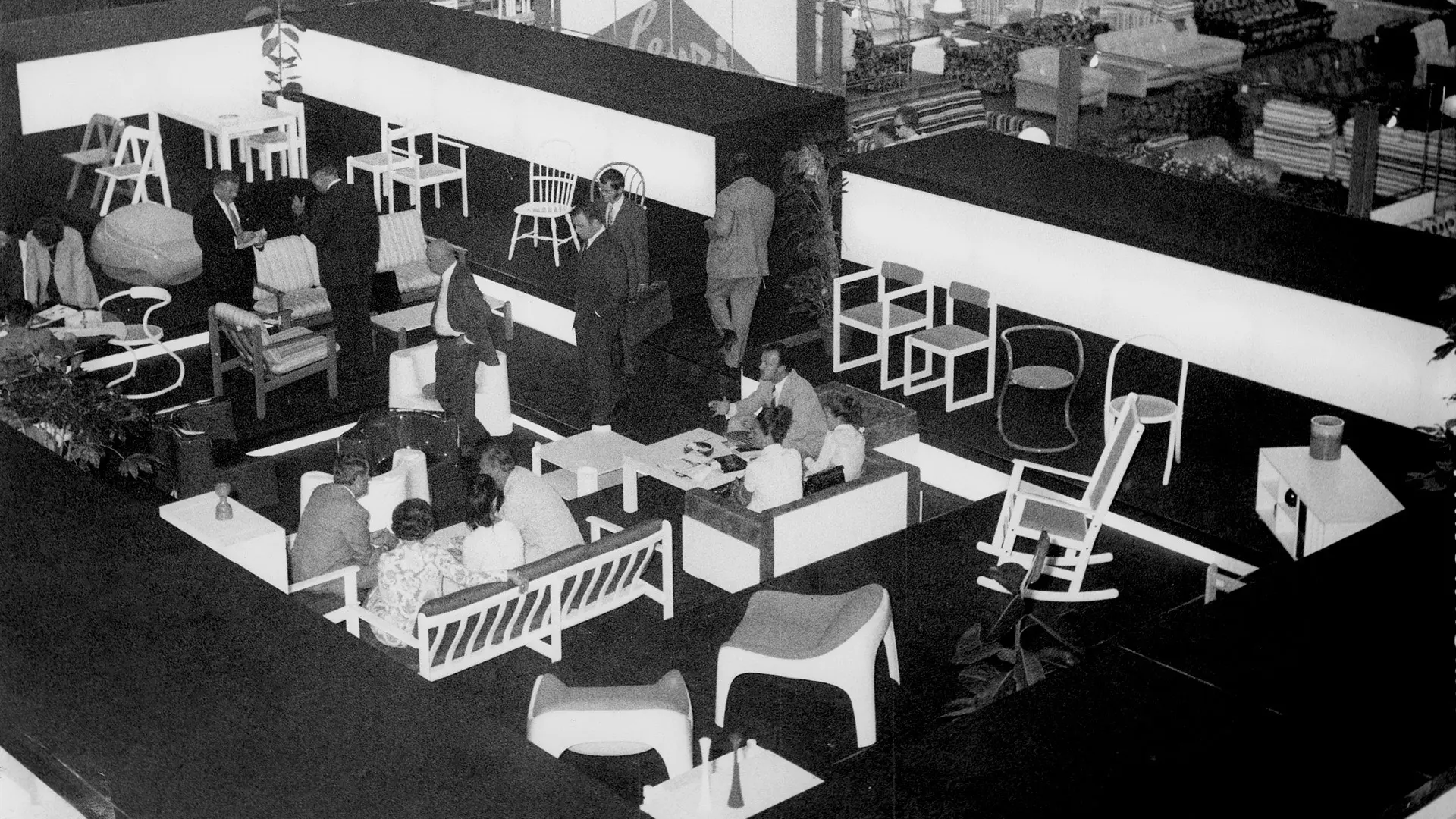
1969, veduta interna con stand
The steps that mapped out the history of the world’s leading design fair
A fair that is as specialised as it is heterogeneous, symbolic of a way of working and a culture that is undoubtedly industrial yet also extremely cultural, drawing in hundreds of thousands of visitors every year: sectoral professionals, producers, designers, salespeople, fans, the curious and the newcomers. The Salone del Mobile.Milan is a crosscutting event that the world of international design enthusiastically shares with the city. This year, for the sixtieth time.
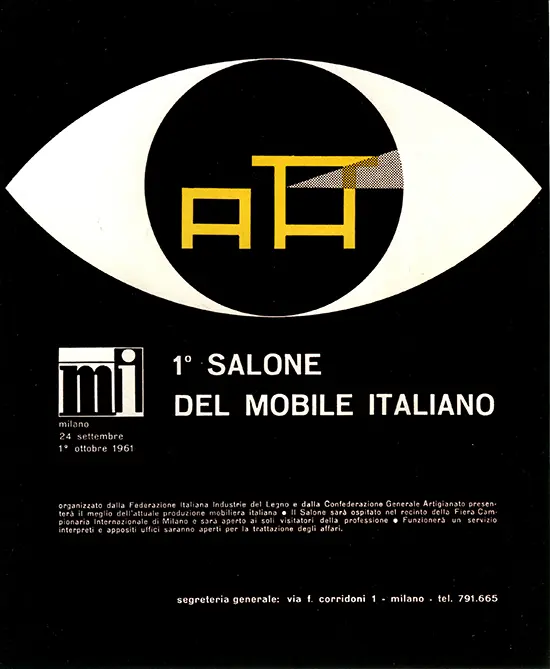
Courtesy Salone del Mobile.Milano
1961-1971
On 24 September 1961 a group of thirteen Italian furnishing entrepreneurs decided to launch the first Milanese fair geared to the furnishing world which, thanks to an inspired idea, was called the Salone del Mobile right from the start. 328 companies took up the invitation to take part in this exciting new exhibition (the poster was designed by Camillo Pizzigoni) and the television reporters described this first edition as “a packed exhibition of everything needed to make the home beautiful and comfortable.”
Just a few years later, in 1965, the leading furnishing sector companies were assembled in Pavilion 30/3 of the fairground, creating an exhibition space with a wide range of goods on offer. In that same year the Salone also began designing more uniform installations and simpler trajectories, presenting an increasingly well-defined and compact identity, and therefore also more efficient. This decision clearly paid off during the boom years that immediately followed, to such an extent that by 1967 the event had earned itself the title “international.” At the same time, to boost the event in the city, the Retrospective Exhibition Documenting Furniture Design in Italy from 1945 to the Present Day was held, launching the cultural programme held in tandem with the fair each year.
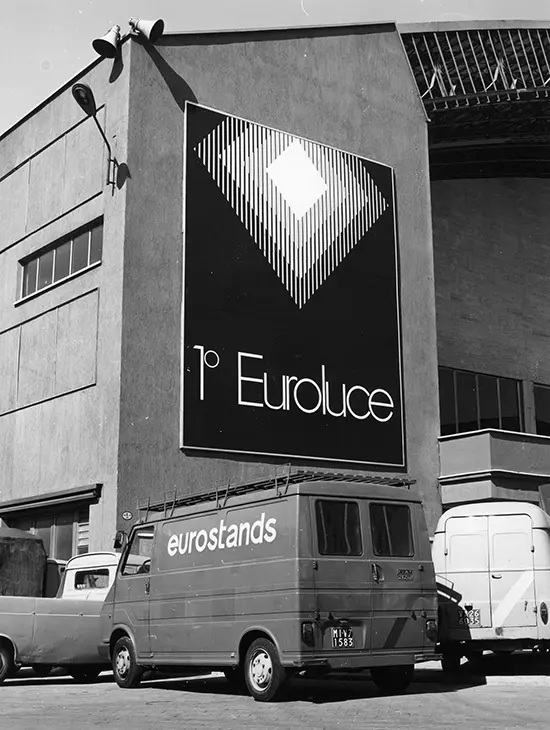
1976, segnaletica 1° Euroluce
1971-1981
During the 1970s, some of the changes in society seen across the previous decade became consolidated and, along with the market and employment, homes too were found to have changed radically. The first two Salone del Mobile biennial exhibitions were organised in response to this evolution: EuroCucina/The International Kitchen Exhibition in 1974 and Euroluce/The International Lighting Exhibition in 1976, signalling a change of perception regarding the more functional domestic spaces. Technology became integrated into pieces of furniture, becoming a furnishing element in its own right, and part of the lives of many Italian families.
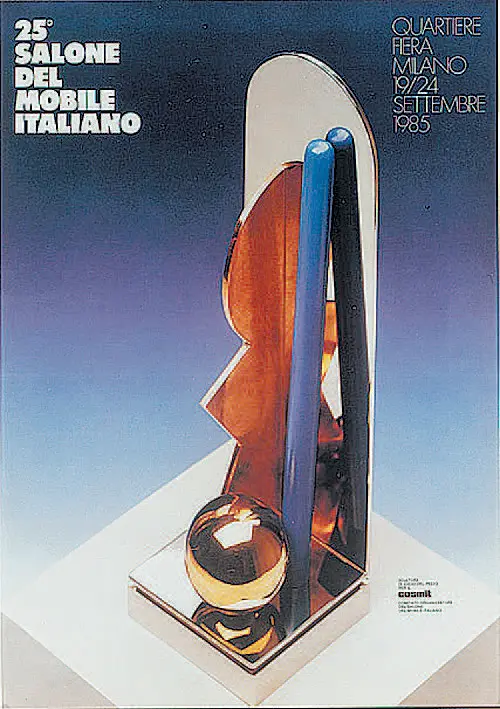
Courtesy Salone del Mobile.Milano
1981-1991
Interest in design, in interior decoration and home comforts continued to grow and the Salone del Mobile became an increasingly powerful global benchmark for each pillar of the sector. The focus on lighting and the focus on kitchens were joined in 1982 by EIMU, the exhibition devoted to office furniture (later renamed SaloneUfficio and now Workplace3.0), which shone the spotlight on the equal importance of workplace quality. The annual event became unmissable, and in 1987 Cosmit (Comitato Promotore del Salone del Mobile Italiano) was awarded the Compasso d’Oro award “for its important contribution to the promotion and awareness of the sector most sensitive to design.” The authority conferred by this prestigious recognition spurred the company to keep moving ahead and to grow even further: by the end of the 1980s, the Salone launched its first paper-based advertising campaign, put together by STZ, one of the most innovative and extraordinary agencies of the time.
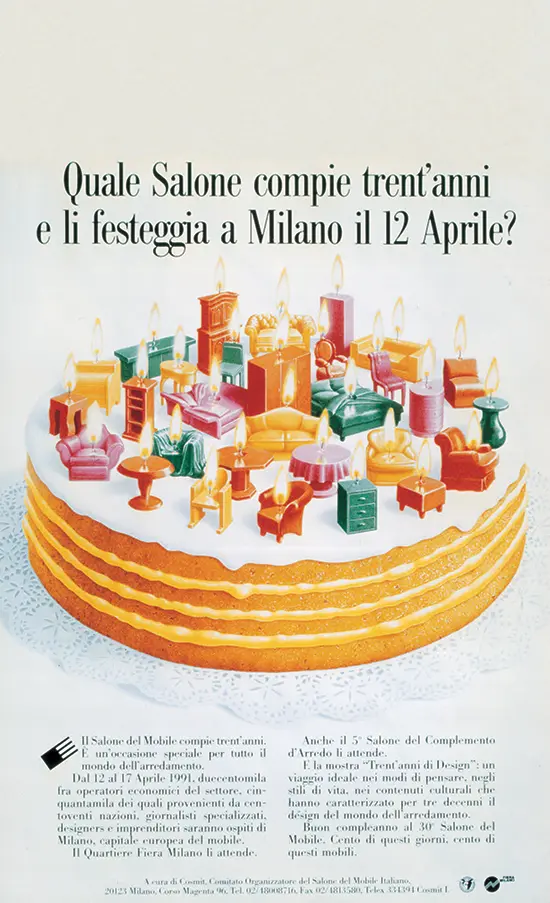
Courtesy Salone del Mobile.Milano
1991-2001
The event, now firmly established, continued to grow within the walls of the fairground pavilions, while also featuring a packed programme of collateral exhibitions. On one hand a tradition of paying homage to the great masters of design was born – with the Achille Castiglioni solo show in 1996, followed by Joe Colombo, Gio Ponti, Vico Magistretti, Alvar Aalto, Bruno Munari and Ettore Sottsass – and on the other, new exhibitions formats were launched, with crosscutting events mixing design, art, fashion and food, the first of which was Rooms and Secrets, held at the Rotonda in Via Besana in 2000.
Meanwhile, in 1994, Massimo Vignelli designed the manual for a coordinated image of the Salone del Mobile (which he ran until 2003), for which he won the Compasso d’Oro in 1998. In the same year, one of the most successful Salone events was also launched: SaloneSatellite, the brainchild of Marva Griffin Wilshire, who was awarded the Ambrogino d'Oro in 2017 and the Compasso d'Oro Lifetime Award in 2014 “for bringing out many young Italian and international design talents”. SaloneSatellite is the “springboard” for recent graduates and emerging professionals, offering them a chance to show off their projects, and has become a point of reference over the years for companies looking for future talents and a place at the fair where they can pick up on the freshest ideas and original design approaches.


 Exhibitions
Exhibitions
